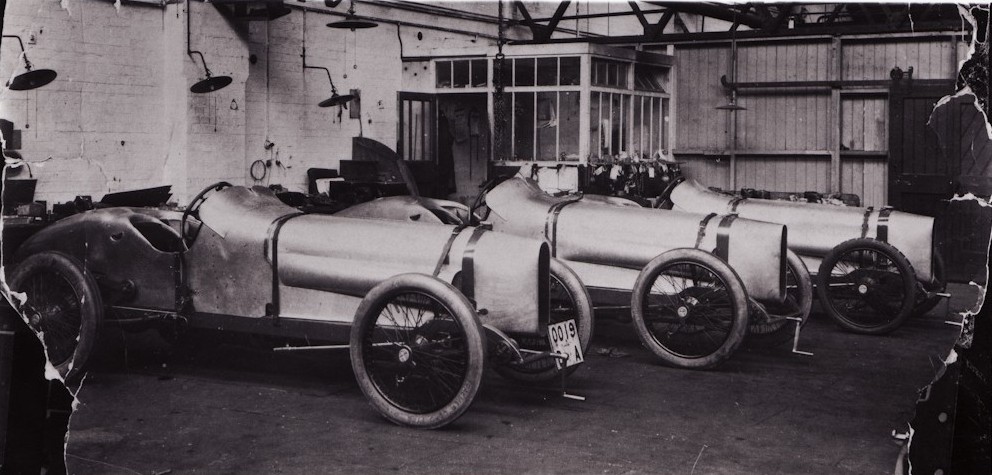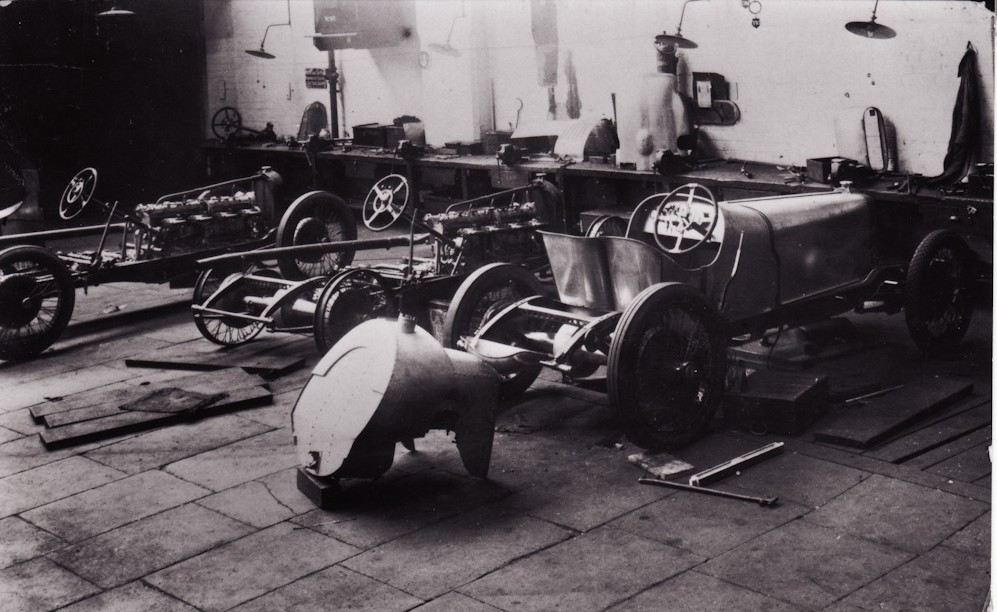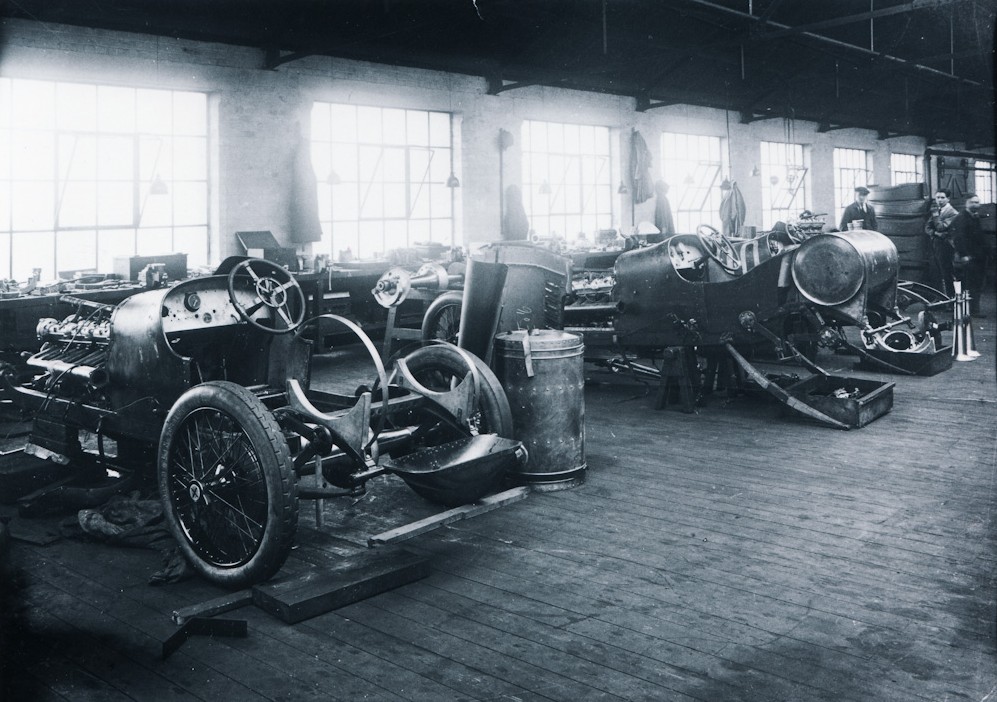Body:
The lightweight all aluminum body consisted of a bonnet riveted to reinforcing copper straps, scuttle on angled steel, seats tub and tail. Both narrow staggered two-seater and single-seater were constructed by the Works. Sunbeam did not construct new bodies for each event but modified and evolved bodies from one event to another to accommodate change in branding, carburetors, engine type and fuel capacity. The side blisters on the bonnet were modified to accommodate different carburetors configuration; a hatch on scuttle was formed when a 1916 4.9lt engine was used; alternative tails and radiators were used as needed. Flared front offside wing were used during the 1922 IoM T.T. Approximate frontal area without the wing 11 1/2 sq.ft, with wing and riding mechanic 13 1/2 sq.ft.
Body Types used in principle events:
1921 Indianapolis 500 –two seater, 3lt pointed tail – G.P. Type.
1921 French G.P. – two seater, 3lt pointed (Talbot Darracq radiators) and slanted tails (Talbot radiators) – G.P. Type.
1922 IOM TT – two seater, 3lt exposed fuel tank – T.T. Type.
1922 Coppa Florio – two seater, exposed fuel tank, altered bonnet, 4.9lt- T.T. Type
Instruments:
Instruments varied from car to car in accordance with pilot specifications but also according to engine type used. In the IoM tourist Trophy the following were used: Jaeger rev counter, Sunbeam oil pressure gauge, fuel air pressure, twin magneto switches, twin glass oil restrictors.


